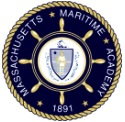OICEW-4-1B
Watch Relief
Function: Marine engineering at the operational level
| Competence | Knowledge, Understanding & Proficiency | Task |
|---|---|---|
|
Maintain a safe engineering watch |
A1.1 Thorough knowledge of Principles to be observed in keeping an engineering watch, including:
|
Watch Relief |
Assessed in: EN-4231 Sea Term IV Engine
Condition
Aboard ship while underway, or in an approved simulator, given the engineering log book, the pertinent standing orders and proper safety equipment.
Behavior
Assume the engineering watch in accordance with STCW Code (A-VIII/2 part 3-2), describing each step as executed and making all necessary inspections and site visits required to understand and verify the status of the watch.
Standard
- Standing orders and special instructions are read and understood; descriptions to the assessor are correct, complete and indicate clear understanding of duties involved;
- All work being performed on machinery and systems, personnel involved and potential hazards in the engine room are identified and described to the assessor completely and correctly with watch implications clearly explained;
- Levels of the following are correctly reported: bilge, ballast tanks, slop tanks, reserve feed tanks, fresh water tanks, and sewage tanks;
- Condition and level of fuel is correctly reported for the following: reserve tanks, settling tank, day tank, and other fuel storage facilities;
- Special requirements relating to sanitary system disposals are verified and correctly reported;
- Condition and mode of operation of all main, auxiliary, stand-by and emergency equipment is verified and correctly reported;
- Condition of monitoring and control console equipment, including equipment being operated manually is identified and correctly reported;
- Where applicable, the condition and mode of operation of automatic boiler controls such as flame safeguard control systems, limit control systems, combustion control system, fuel supply control, systems and other equipment related to the operation of steam boilers are identified and correctly reported;
- Potentially adverse conditions resulting from bad weather, ice or contaminated or shallow water are verified and appropriate actions are taken;
- Special modes of operation dictated by equipment failure or adverse ship conditions are verified and reported;
- The report of the engine room ratings to their assigned duties are verified and reported;
- Availability of fire fighting appliances is verified and reported;
